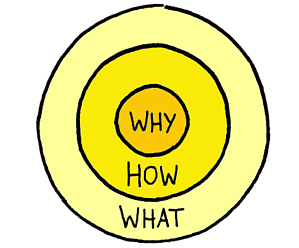- Home
- Curriculum
- The Village Secondary
- Literacy
Literacy
|
Why |
How |
What |
|
The English curriculum aims to ensure that students: learn to listen to, read, view, speak, write, create and reflect on spoken, written texts and use AAC across a growing range of contexts. We intend to: •give all children a solid base upon which to build as they progress through school and into adulthood. •help children to develop the habit of reading widely and often, for both pleasure and information The major in English develops the student's sensitivity to language and literature and enriches knowledge of the artistic imagination. It exposes students to a broad range of literary works in their historical context and helps them develop skills in speaking, writing, and critical thinking. The main aims are: a. to enable the learner to communicate effectively and appropriately in real life situation; b. to use English effectively for study purpose across the curriculum including accreditations; c. to develop interest in and appreciation of Literature; d. to develop and integrate the use of the four language skills i.e. Reading, Listening, Speaking and Writing. At all times we are aware of the need to respect the developmental maturity and aptitude of the learners we are planning for. We aim to use materials and tasks appropriate to the age and maturity of the students. Our aim for our readers who are becoming fluent is that they will be able to read silently and comprehend any text which is significant to them, and which relates to a topic with which they could cope in their spoken language.
|
Our English lessons develop pupils’ spoken language, reading, writing, grammar and vocabulary as well as aiding learners to communicate using methods they can access. English is often taught in a cross-curricular way, linking up with other areas of the curriculum. The Village School has the following Reading Pathways: a. The Referential approach seeks to formulate meaning by establishing the interdependence between words and the things or concepts they represent. This is achieved by Sensory cues such as Tactile cues, Sound cues, Visual cues, Olfactory cues, Object cues as well as Objects of Reference, Body signing, Photos/ Pictures, Sensory Stories, Massage stories, Music cues, TAC-PAC. b. The Functional reading approach is for those individuals who are not yet ready for a formal reading programme. Pupils on the Sight and Phonics pathways will also have functional literacy imbedded within daily activities. This is implemented by using photos, symbols, PECS, Makaton. Social sight vocabulary (signs and symbols in the community). Following instructions in picture or symbol form. c. The sight-reading approach has been found to be beneficial for many pupils with Down’s syndrome and those on the Autistic spectrum. This is implemented by ‘Look and Say’, recognitions and comprehension of words ‘See and Learn’ scheme, social sight vocabulary, 100 High Frequency words. d. The Phonics approach is a method of teaching pupils to read by linking sounds (phonemes) and the symbols that represent them (graphemes, or letter groups). It is implemented by using ‘Letters and Sounds’, Phonological awareness, Tricky words (sight reading), Comprehension of words. All our pupils have access to all pathways according to their need, pupils may follow more than one pathway. We are using the DfE validated- ELS Essential Letter and Sounds– Validated as an effective systematic synthetic phonics teaching programme by the Department for Education, designed to improve literacy levels. Writing Learners are given every opportunity to practise their prewriting and writing skills, ranging from mastering the pincer grip, mark making, form recognisable letters and writing words and sentences, based on their abilities as well as incidental writing skills, such as signing work. Learners are also given opportunities to extend the notion of writing by developing qwerty keyboard skills, since the business of writing for those with severe learning difficulties can be explored much more readily through mobile phones, i-pads, tablets and computers. Lesson objectives are made clear in pictures/symbols/writing, as appropriate. Objectives are challenging yet achievable. This promotes self-esteem and enable all students to achieve success. Teachers communicate in ways students are comfortable with. Visual timetables or other devices are used to indicate the structure and progress of lessons.
|
By the time pupils leave the Village School, some of them will have read a variety of different kinds of texts. They will also be able to read and write confidently and express their opinion on a range of topics through the lexical set they would have developed in English lessons. Each pupil has been given progressive and increased opportunity and access facilitating the acquisition of enjoyment and skills in pre reading including reading skills. Some of the learners will be able to communicate using AAC methods. Ultimately, the impact of our English curriculum will see some of our learners leave to go to college, apprenticeship or to enter the world of work with the necessary communication and literacy skills to survive and thrive in the outside world.
|


